
The 182d Fighter Squadron is a unit of the Texas Air National Guard 149th Fighter Wing located at Kelly Field Annex, Joint Base San Antonio, Texas. The 149th is equipped with the F-16C/D Fighting Falcon.
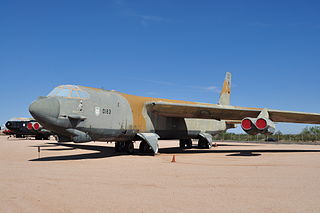
The 397th Bombardment Wing is an inactive United States Air Force unit, last assigned to the 45th Air Division of Strategic Air Command at Dow Air Force Base, Maine, where it was inactivated on 25 April 1968.

The 178th Attack Squadron is a unit of the North Dakota Air National Guard 119th Wing located at Fargo Air National Guard Base, North Dakota. The 178th is equipped with the MQ-9 Reaper.

The 181st Airlift Squadron is a unit of the 136th Airlift Wing of the Texas Air National Guard stationed at Naval Air Station Joint Reserve Base Fort Worth, Texas. The 181st is equipped with the Lockheed C-130J Hercules.

The 586th Flight Test Squadron is a United States Air Force unit, stationed at Holloman Air Force Base, New Mexico.
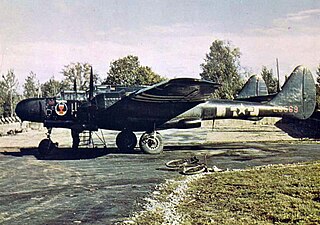
The IX Air Defense Command was a United States Army Air Forces formation. It was assigned throughout its time in combat to Ninth Air Force. Its final station was at Bad Neustadt an der Saale, Germany, where it was inactivated on 25 June 1946.

The IX Fighter Command was a United States Army Air Forces formation. Its last assignment was with the Ninth Air Force, based at Erlangen, Germany, where it was inactivated on 16 November 1945.

The IX Tactical Air Command was a formation of the United States Army Air Forces. It fought in the European theater of World War II. Its last assignment was at Camp Shanks, New York, where it was inactivated on 25 October 1945.
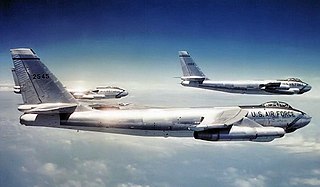
The 368th Training Squadron is a United States Air Force ground training unit, located at Fort Leonard Wood, Missouri. The squadron reports to the 782d Training Group, part of the 82d Training Wing, at Sheppard Air Force Base, Texas and conducts training for airmen in civil engineering, as well as in Logistics Readiness in Ground Transportation.
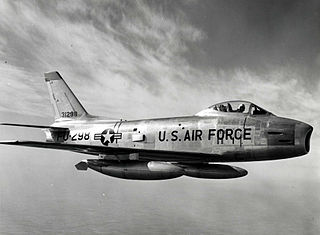
The 554th Fighter-Bomber Squadron is an inactive United States Air Force unit. It was last assigned to the 386th Fighter-Bomber Group at Bunker Hill Air Force Base, Indiana, where it was inactivated on 8 July 1957.

The 587th Bombardment Squadron is an inactive United States Air Force unit that was assigned to the 394th Bombardment Group. It was a Martin B-26 Marauder unit that was organized and trained in the United States during World War II. It flew combat missions in the European Theater of Operations, where it earned a Distinguished Unit Citation and a French Croix de Guerre with Palm. After V-E Day, it served with the occupation forces in Germany until inactivating on 28 December 1945 as the 394th Group converted to Douglas A-26 Invaders.

The 597th Bombardment Squadron is an inactive United States Air Force unit. It was activated at MacDill Field, Florida in April 1943. After training in the United States, it transferred to the European Theater of Operations, where it was a component of IX Bomber Command. The squadron served in combat from April 1944 until the end of World War II, earning a Distinguished Unit Citation for an attack on Ediger-Eller, Germany, in December 1944 during the Battle of the Bulge. Following V-E Day the squadron remained in France until December 1945, when it returned to the United States and was inactivated at Camp Shanks in January 1946.

The 511th Tactical Fighter Squadron is an inactive United States Air Force unit. It was last assigned to the 10th Tactical Fighter Wing, stationed at RAF Alconbury, England. It was inactivated on 30 December 1992.

The 394th Fighter Squadron is an inactive United States Air Force unit. It was assigned to the 367th Fighter Group and was last stationed at Seymour Johnson Field, North Carolina, where it was inactivated on 7 November 1945.
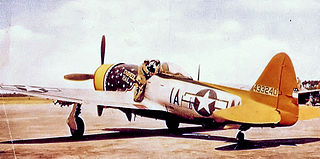
The 366th Fighter Squadron is an inactive United States Air Force unit. It was last assigned to the 358th Fighter Group of IX Fighter Command La Junta Army Airfield, Colorado, where it was inactivated on 7 November 1945.

The 367th Fighter Squadron is a "reverse" associate United States Air Force unit, stationed at Homestead Air Reserve Base, Florida, where it operates and maintains the General Dynamics F-16 Fighting Falcons of the 482d Fighter Wing of the Air Force Reserve Command. Its parent is the 495th Fighter Group at Shaw Air Force Base, South Carolina.

The 508th Fighter Squadron is an inactive United States Army Air Forces unit. It was last assigned to the 404th Fighter Group at Drew Field, Florida, where it was inactivated on 9 November 1945. The squadron saw combat in the European Theater of Operations with Ninth Air Force as a fighter-bomber unit during World War II. It was decorated by the American, French, and Belgian governments for its actions during the war.

The 574th Bombardment Squadron is an inactive United States Air Force unit. The squadron was a World War II unit assigned to the 391st Bombardment Group. After training in the United States, the squadron moved to England, and participated in operations against Germany from there and the European Continent as part of IX Bomber Command. It earned a Distinguished Unit Citation for its combat actions. Following V-E Day, the squadron returned to the United States and was inactivated at the port of embarkation.

The 572nd Tactical Air Support Squadron is an inactive United States Air Force unit. It was formed by the consolidation of two earlier units bearing the number 572, but has not been active since the consolidation.

The 136th Operations Group is a component of the 136th Airlift Wing of the Texas Air National Guard. It was first activated in June 1943 as the 368th Fighter Group. After training with Republic P-47 Thunderbolts in the United States, it deployed to the European Theater of Operations, where it began combat operations in March 1944. Shortly after D-Day, the group moved to the continent of Europe, continuing operations until May 1945. The group was awarded the Distinguished Unit Citation and the Belgian Fourragère for its combat operations and being credited with the destruction of 120 enemy aircraft in air to air combat. It served in the occupation forces until the spring of 1946, when it inactivated and transferred its personnel and equipment to another unit.






















